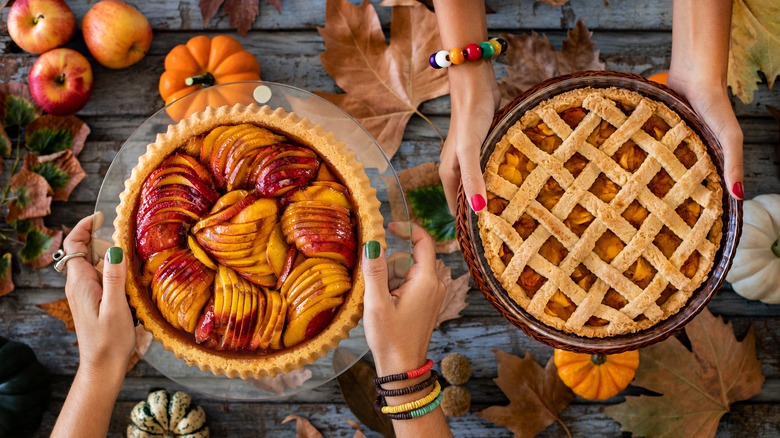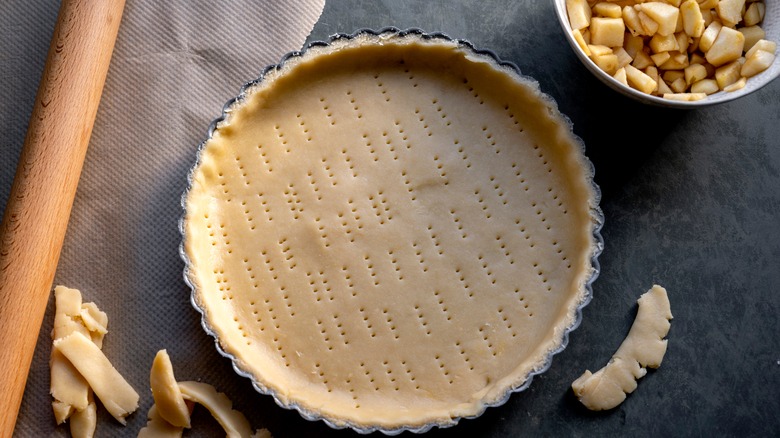The Crucial Reason You Need To Cool Pie Filling
Homemade pie season is almost upon us, and if you are a lover of this sweet or savory dish, you are probably counting the days before you start making all those delicious apple, pumpkin, sweet potato and pecan pies that scream autumn is here. Sure, summer brings us all those berry pies with its warmer weather, but it's the pies of fall that we long for. According to the Smithsonian Magazine, pie, especially that of the apple variety, holds a special place in American history.
In fact, the magazine goes on to share that in 1899, the Chicago Daily Tribune dubbed pie as a staple, writing that it was "an article of necessity in every household as much as the bed and cook stove." We can't disagree. Perhaps, it's the reason that about $700 million worth of pies are sold each year, per the American Pie Council. However, if you are among those Americans that like to make your own pies, then you may want to think twice before putting hot pie filling into your pie crust for this crucial reason.
It's all about the crust
When you are making your favorite pie fillings, it's important to not be hasty and place this hot mixture into your chilled pie crust, per Southern Living. Instead, the publication recommends allowing the filling, whether it be savory or sweet, to adequately cool or you risk melting the butter in your crust. What kind of havoc can this seemingly minor mistake have on your precious pie?
According to a discussion on the Cooking Stack Exchange forum, when you are crafting your pies, everything from the butter to the water to what you roll your crust out on needs to be cold. One participant explained, "This is to prevent the fat from melting into the flour prematurely, which results in cardboard-like pastry. When the fat remains cool until cooking, it melts into layers in the pastry as it cooks, making it nice and flaky."
Another member of the community noted that putting hot pie filling into a cold crust can also cause a soggy bottom, and nobody wants that. The pie maker goes on to share that working with all cool ingredients is essential with traditional pies, but also notes short-crust pies — those crusts that are more biscuit like, according to All Recipes — are a little more "forgiving" if the warm filling is poured into the crust before popping it into the oven.

